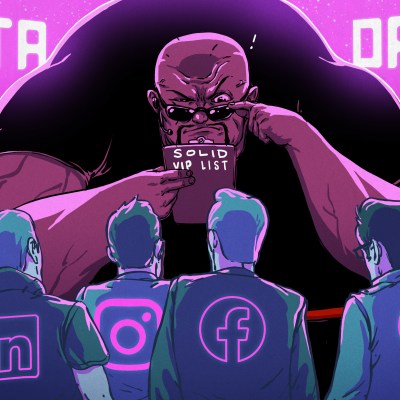We ran an article on Solid this week, a project that aims to do nothing less than change the privacy and security aspects of the Internet as we use it today. Sir Tim Berners-Lee, the guy who invented the World Wide Web as a side project at work, is behind it, and it’s got a lot to recommend it. I certainly hope they succeed.
The basic idea is that instead of handing your photos, your content, and your thoughts over to social media and other sharing platforms, you’d store your own personal data in a Personal Online Data (POD) container, and grant revocable access to these companies to access your data on your behalf. It’s like it’s your own website contents, but with an API for sharing parts of it elsewhere.
This is a clever legal hack, because today you give over rights to your data so that Facebook and Co. can display them in your name. This gives them all the bargaining power, and locks you into their service. If instead, you simply gave Facebook a revocable access token, the power dynamic shifts. Today you can migrate your data and delete your Facebook account, but that’s a major hassle that few undertake.
Mike and I were discussing this on this week’s podcast, and we were thinking about the privacy aspects of PODs. In particular, whatever firm you use to socially share your stuff will still be able to snoop you out, map your behavior, and target you with ads and other content, because they see it while it’s in transit. But I failed to put two and two together.
The real power of a common API for sharing your content/data is that it will make it that much easier to switch from one sharing platform to another. This means that you could easily migrate to a system that respects your privacy. If we’re lucky, we’ll see competition in this space. At the same time, storing and hosting the data would be portable as well, hopefully promoting the best practices in the providers. Real competition in where your data lives and how it’s served may well save the Internet. (Or at least we can dream.)
This article is part of the Hackaday.com newsletter, delivered every seven days for each of the last 200+ weeks. It also includes our favorite articles from the last seven days that you can see on the web version of the newsletter.
Want this type of article to hit your inbox every Friday morning? You should sign up!
Source:: Hackaday

